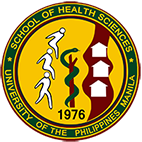Academics
The SHS Step-Ladder Curriculum
The innovative step-ladder curriculum, the first of its kind in Asia is the main feature of the school’s academic program, and has been known to be very effective in addressing health manpower problems in the country. It is competency-based and community-based curriculum which integrates the training of the broad range of health manpower from the midwife, nurse, nurse practitioner and Doctor of Medicine in a single, sequential and continuous curriculum. This strategy has been used as a model by several community-based health training programs worldwide.
After seven quarters (11 weeks/quarter) of training, the student shall have acquired the knowledge and skills of a midwife and earns the certificate in Community Health Work (CHW) which qualifies him/her to practice midwifery after passing the Midwifery Licensure Examination. A Student who go on for another five quarters of study graduate with the degree of Bachelor of Science in Nursing (BSN) which qualifies him/her to practice nursing after passing the Nurse Licensure Examination. Two more quarters of study will qualify the student as local counterpart of the nurse practitioner in other countries. This level of the curriculum however is under study. The final level of the curriculum is the Doctor of Medicine (MD) program. It consists of a yearly interval of didactics, clinical and community experiences over a period of five years. After completing the prescribed period of study, the student is now qualified to take the Physicians Licensure Examination and subsequently practice medicine after passing the examinations.
Service Leaves
In between program levels, the students are required to undertake service leaves in their home communities for an indefinite duration or a minimum of three months. The concept of service leave is derived from the need to integrate the instructional content and processes learned in school into a unified and understandable whole in the communities they serve. The service leave offers the following opportunities:
For the students
- To enrich their educational experience with actual service at several levels of the curricular ladder;
- To be continuously oriented with the dynamic interplay of forces that affect the development of their communities;
- To reflect on the institutional goals and instructional objectives of the School and on the different academic, psychological and situational demands on the capabilities and competencies as health professionals.
- To strengthen commitment and renew the bond generated between the scholar and the community generated during the recruitment.
For the School
- To assess the relevance of its philosophy, objectives, program content, methods and strategies;
- To strengthen its linkages with the DOH, DILG and various Local Government Units;
- To strengthen partnership with communities in the training of their scholars;
- To provide opportunities for the faculty to keep in touch with the realities in the communities and strengthen their commitment to the concept of the school.
For the Community
- To strengthen support for their scholar and enhance its own commitment by jointly working with and availing of the services of the scholar.
- To augment the delivery of health services in the community.
Multiple Levels of Exit and the Mechanism for Lateral Entry
- A student may exit from any level of the curriculum and return to the community as a functional health worker. Thus a graduate could exit as a Community Health Worker (Midwife), a Nurse or Nurse Practitioner or a Medical practitioner.
- After a period of serving the community, a graduate can be readmitted to the next level of the curriculum subject to community need and endorsement, and the student’s performance in the previous level.
- Should there be a need for health worker with advance skills in their community, graduates who have been serving as health workers for quite sometime already, may be readmitted to the next level of the curriculum, subject to re-endorsement of the community or their sending agency.
Partnership with Linked Agencies and Communities in the Development of Health Human Resources.
- Involvement of DOH, DILG and LGU’s in the recruitment of scholars;
- Endorsement is required for the scholar’s admission and progress to higher levels;
- University, linked agencies and LGU’s share the responsibility of providing financial support for scholars.
- Shared supervision of the students during service leave between the school, linked agencies and local community leaders.
- The school’s part-time lecturers come mainly from the DOH. Service people as mentors are envisioned to broaden the student’s theoretical and academic perspectives with their realistic “first hand” experiences.
- The service facilities of the Department of Health and the Local Health Unit’s health centers serve as the main training facilities for the students’ field experiences.
Democratized Admission
- Policies on recruitment and admissions de-emphasize past academic performance and passing the UPCAT. Instead, admission is based on community need and the scholar’s willingness and commitment for community service.
- The school has adopted the qualitative grading system of “Passed” (P) and “Needs Tutorials” to ensure the development of required competencies rather than competing for grades.
Return Service Requirement
- Sponsoring communities are committed to employ their scholars after graduation,
- Scholars are required a return service obligation of 2 years of service for every year of study which ensures the availability of health workers specially in underserved areas.

